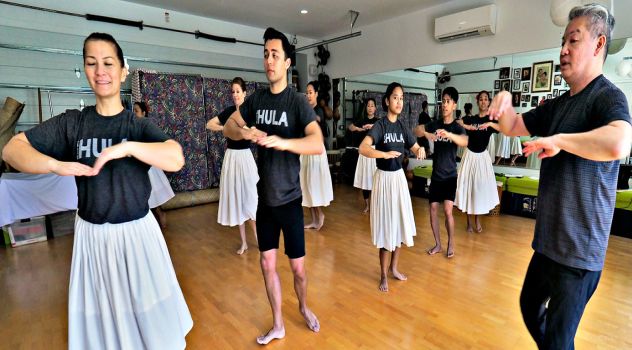HAWAII, Honolulu – A master practitioner of the Hawaiian hula dance has told UN News that he is “nothing without my culture.”
Michael Pili Pang, who is based in Honolulu, the capital of the US state of Hawaii is what is known as a kuma hula, or master teacher of the traditional dance. His interest in hula began at the age of seven and he opened his hālau or dance school over thirty years ago. He teaches what he describes as “multi-generational” classes.
He spoke to UN News as part of a photography project by the International Labour Organization ahead of the UN-backed International Arts Education Week which begins on May 25.
“Hula is closely connected to the culture of the Hawaiian Islands. And so, as a hula teacher, I am nothing without my culture. I am nothing without the connection to the stories I teach in dances, to the land, the sea, the sky and the gods that created these islands.
I am guided by the belief that the best foundation in creating something new is a thorough understanding of the past and our culture.
When I teach hula, I make the connection with nature; In a dance, my students may have to imagine that the mountain or the flowers are their children. For example, when I teach a simple motion like the sway of a coconut tree, my hand is across my chest and my eyes are looking up and not down. That’s because when you go to the beach, you would never see a coconut tree below you. So, as a hula dancer you learn to naturally lift your body up and look at the coconut tree up above your hands.
This is a way of showing through dance that we are all part of nature; this is the connection with nature that you can find through hula and which helps the dancers to perform with emotion and empathy.
We remember that nature becomes part of us and then when we die, we go back to the Earth.
The impact of climate change on hula
Hula incorporates the natural world in a physical way as well. The flowers, seaweeds and shells that are part of our dances and the wood from which we carve our drums, come from these islands. But climate change means they are not readily available because they are not growing in the same way or in the same places as before.
So, we can no longer go to the mountain to gather flowers; we can’t touch or smell them and that makes it more difficult to teach students about the deep-rooted hula culture.
The dance and culture which it engenders is something that people of all ages want to learn and experience and my multi-generational classes can include school children and retirees.
Hula helps to promote cultural awareness and happiness. It inspires creativity, passion, optimism and fun. Ultimately, I hope it will help my students to make a positive difference in the world.”





